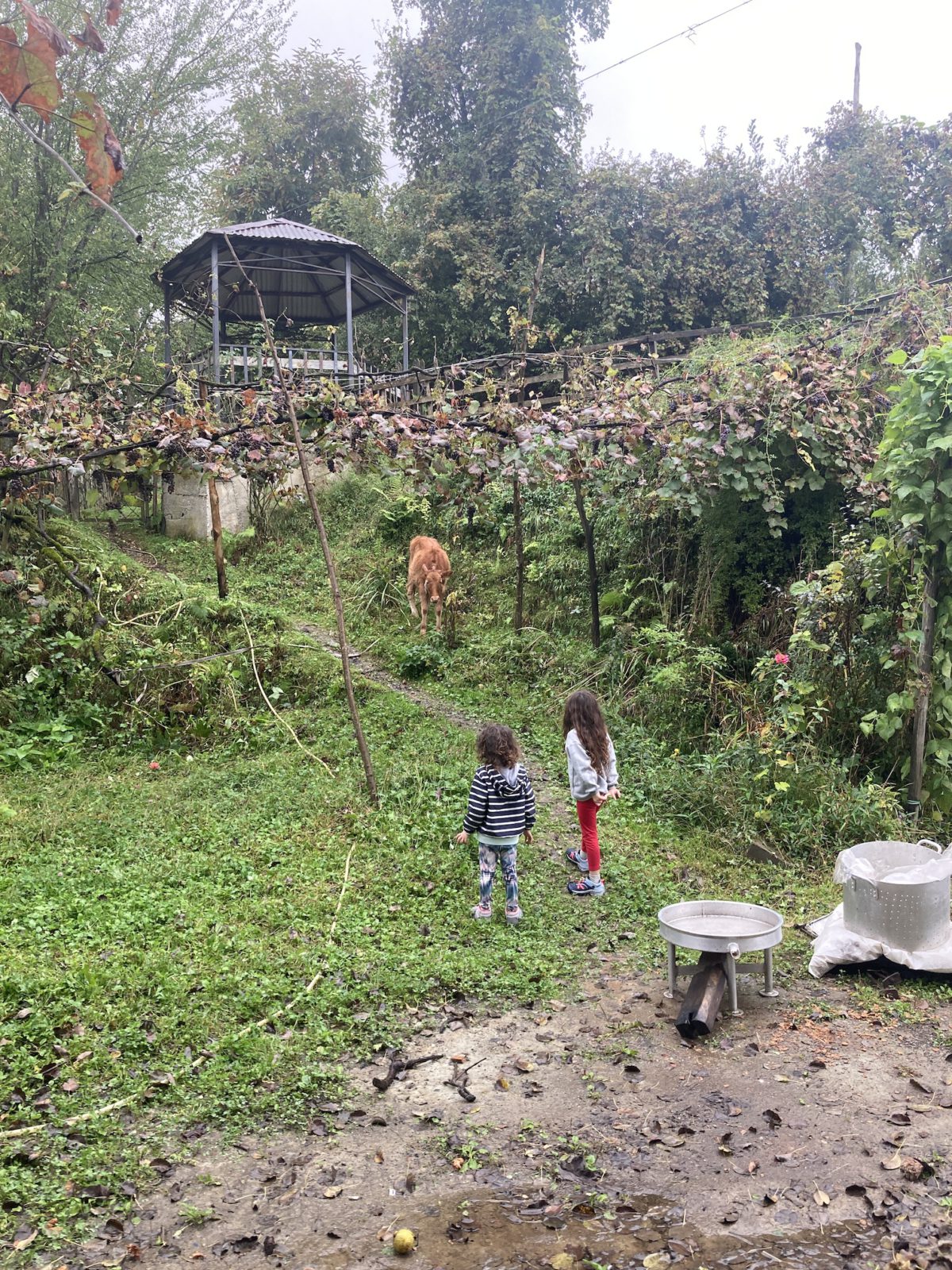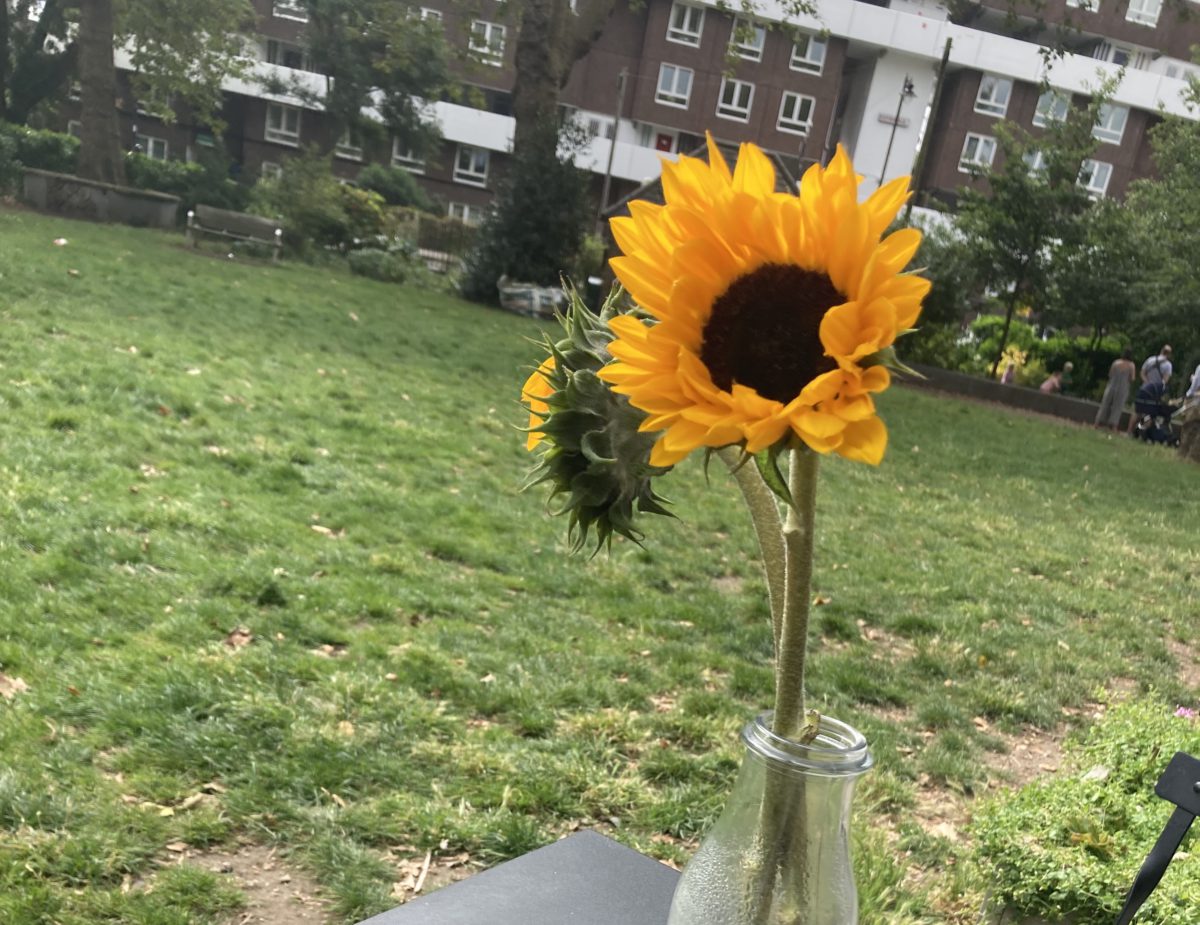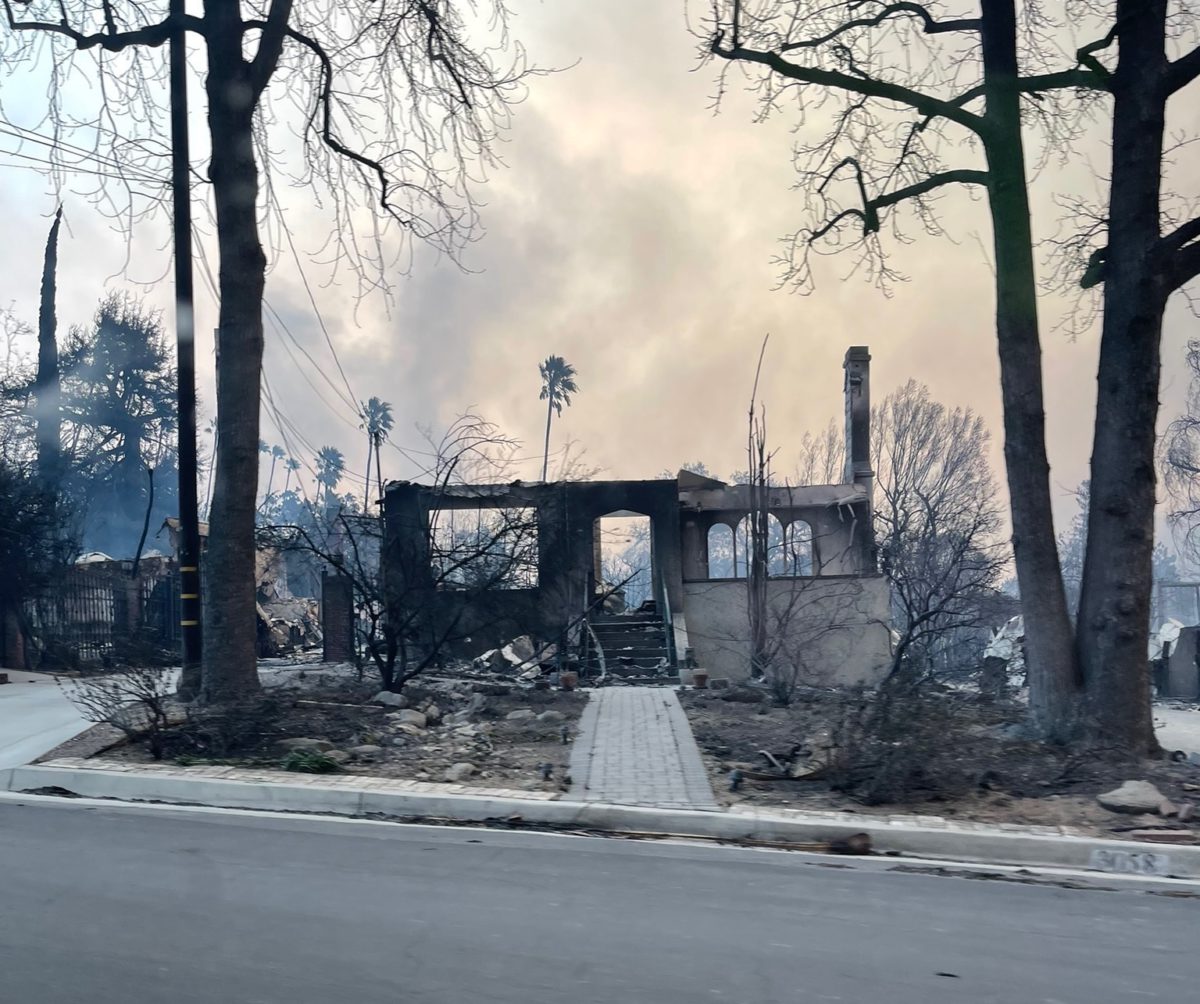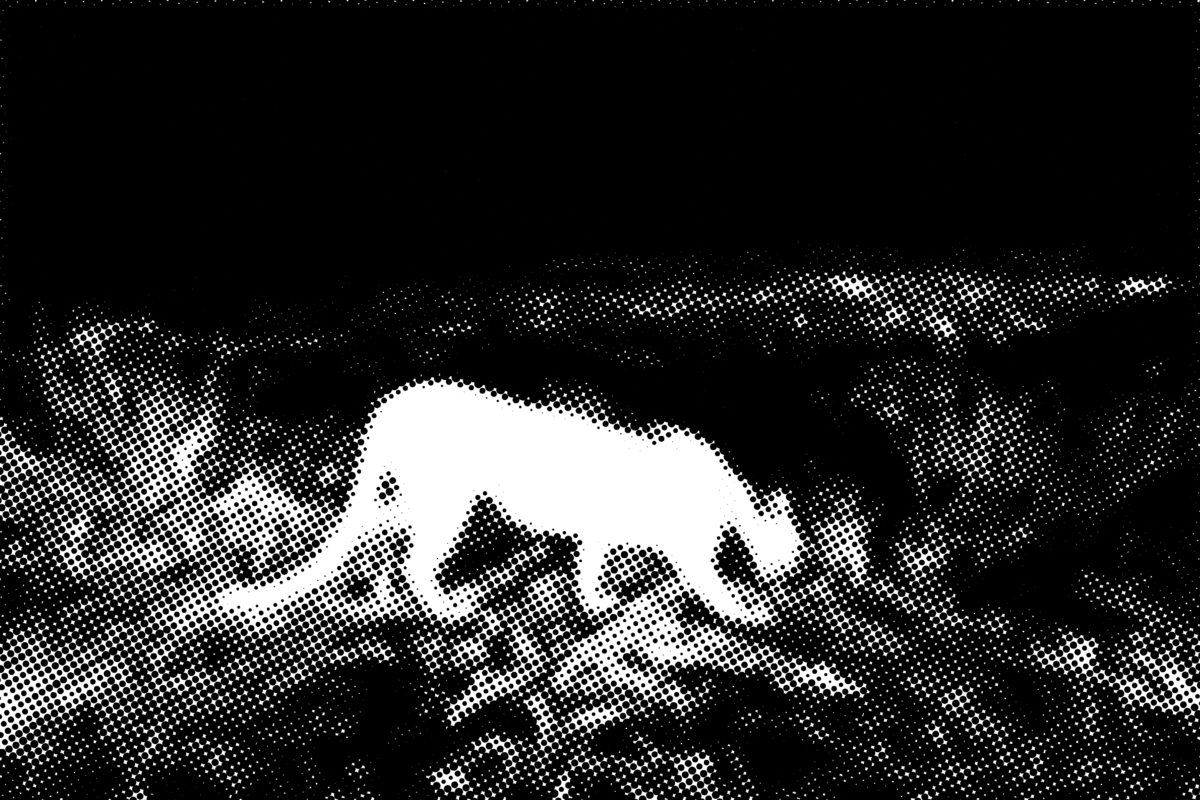New Orleans-Boulder-Oakland
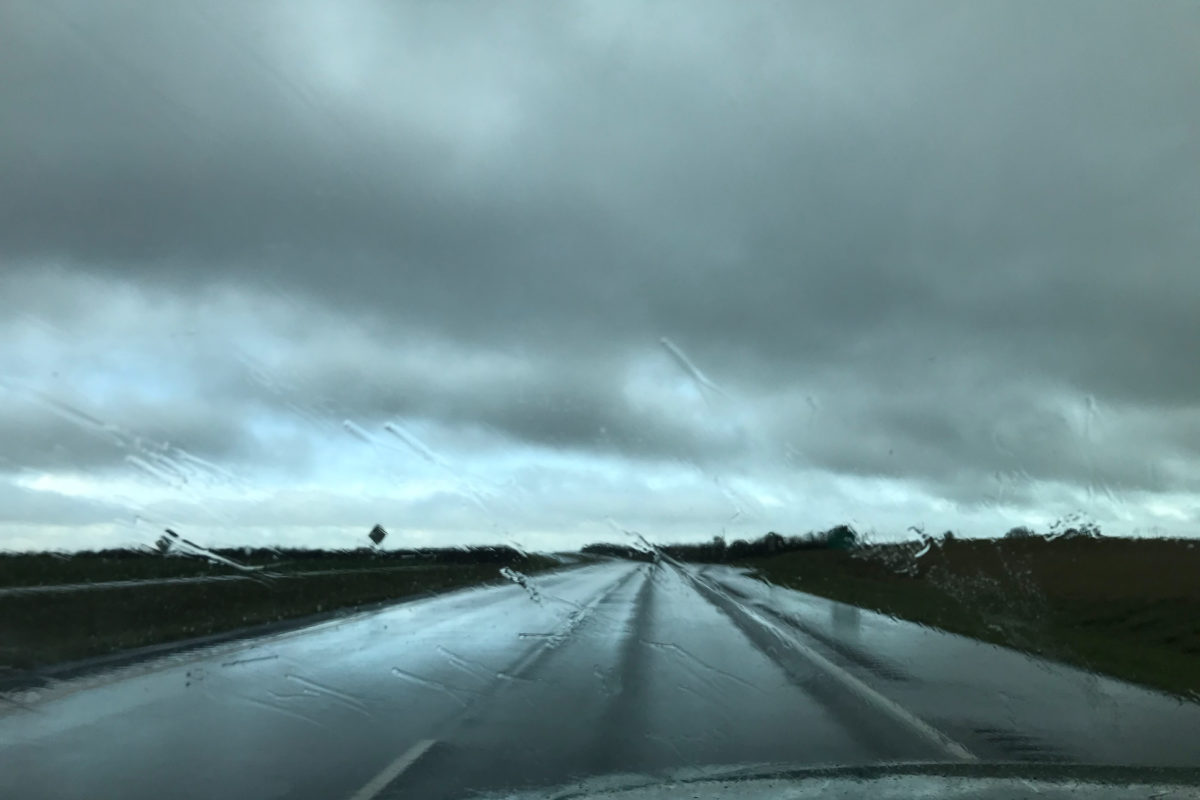
AT THE CLOSE OF APRIL 2020, having saved enough pent-up curiosity about the national lockdown, I was ready to go to the West Coast. On a warm and clear Tuesday I headed northwest out of New Orleans through Louisiana’s system of intermittent causeways. Traffic was light, but not quite indicative of societal collapse. Cajuns fished the waterways. A storm had passed ahead of me and its remnants left a great patchwork of cloud cover like giant clawings, as if some massive beast had left its fevered markings on the door to the heavens. The way I saw it, with touchless credit cards and a truckload of precautionary supplies, I was better off social distancing from the confines of my own pickup than stuck in the mayhem of my three-hundred-year-old metropolis. Not everyone I told agreed with me but my mind was made up by then.
It was almost twilight when I reached Shreveport. The scene reminded me of some unscreened detective drama: uneven electrical poles that seem too skinny, heavy foliage that droops that little bit too low, grimy vehicles in various states of disrepair. As I snaked my way through town to rejoin I-49, I stopped at a small intersection. At the corner, a large family had gathered on a porch. Their unmasked faces, stained with suspicion, looked out in my direction. It felt as though the story of their lives had passed through me like sunlight through a looking glass. With my window rolled down, the air thick, there was the smell of damp earth. By Texarkana, I was ready to turn in.

I crossed the Red River at dawn. Furious lightning strikes prodded the cobalt sky as big rigs heaved so many Amazon orders back and forth. Southern Arkansas struck me as beautiful, verdant country. Often it reminded me of rural Poland with its rule of the land: build and do as you may. Shacks and trailers stood alongside or opposite elaborately manicured ranch houses. The absence of any imposed aesthetic uniformity—laying bare everyone’s income levels—had the jarring effect of being at once primitive and compelling. Everywhere, cows and horses grazed. Mist hovered over the grass.
Somewhere near Coalgate, Oklahoma, at the corner of the tree-lined State Route 3, I pulled into an old service station with a gas pump out of the first Bush administration. I’d been tinkering for a while with the wrench to my spare tire hoist when a woman wearing a baseball cap and a bomber jacket over her coveralls approached me.
“Long way from home,” she said, glimpsing my truck’s California plates. “Yes and no,” I said, lying that I was from Arkansas. “So you got a handle on it then,” she said wryly. The only other car at the station belonged to a family with small children who waited inside. A few heavy drops of rain. Everyone but me was on a first-name basis, no one but me wore a mask. I waited outside on one of those polypropylene school chairs. When the mechanic called me over to pay, I thanked her and added “Better off safe than sorry.” “‘Specially today.” The wind was picking up something furious again. “You just take care now,” she said and waved me off.
In Buffalo, Oklahoma, I stopped to photograph the buffalo sculpture that stood bullish in front of the tiny, vacant city hall. Maybe I shouldn’t be taking so many damned photographs, I thought. I could hardly decipher which ramshackle building had been shut down due to the pandemic, and which had simply been abandoned. Throughout the region, so many of these small towns looked to me like they hadn’t seen a good year since the 1990s, let alone the Great Recession. Banners congratulating 2020’s graduates were contrasted by shuttered doorways and cracked windows. The windshield wipers made bleary, picturesque streaks of the silver and powder blue-spotted sky ahead of me.
At the head of Second Ave. and Wyatt Earp Blvd. in Dodge City, Kansas, stands El Capitan, a bronze reproduction of the Texas Longhorn cattle traded in Dodge’s heyday. The 1880s recreation of famous Front Street was tucked away in the “temporarily closed” Boot Hill Museum. What remained of the commercial “front,” apart from boarded up or vacant spaces, was a vape shop, an heladeria, and a Pizza Hut. While traffic filled the wider boulevards that fed in and out of the train yards and the meatpacking plants, the streets of the town were empty.

When I couldn’t get ahold of anyone at the Wyatt Earp Inn, I dropped fifty bucks on a room at a Travelodge. After unloading the truck, I was welcomed by the stench of urine, paint peeling from my front door, and no bulbs for the bedside lamps. There’s a raw, unpretentious anonymity to motels that has always appealed to me, but this level of drabness was pushing it. I called the front desk, and the Gen Z-aged Latina with the galactic-themed acrylic nails who’d checked me in from behind thick glass re-accomodated me with hardly a hint of surprise. The ‘98 Chevy Malibu sitting on bricks, the plywooded windows across the lot. Did I really expect her to feign shock? I settled into my new room redolent of housekeeping and cigarettes with a pint of Old Grand-Dad and drifted off to the sounds of another roiling thunderstorm.
The scent of fresh manure greeted me as I loaded up the Ranger in the frigid, golden morning. I listened to a cassette of Bruce Springsteen’s Greatest Hits all through Kansas. With place names like Spartan County, Ulysses, and Syracuse (home of America’s first all-female City Council) you couldn’t escape the sense of idyll, an inspired Arcadia. But somehow, I wasn’t buying it.
Along Highway 400, indistinguishable towns blew by, each delineated by tall granaries and festooned in the stars-and-stripes, their children on bicycles or playing catch. It made me think of those ‘80s youthquake blockbusters like Red Dawn, The Outsiders—tales of the Heartland and paranoid violence, indivisible. I was in Trump country, county after county swept in 2016 by staggering margins. Historian Peter Onuf described the United States as suffering from a sense of ahistorical exceptionalism, a precarious state of optimism that is shadowed by fears: fear “that the repressed will return,” fear of outside influences “contaminating the republic,” simmering fears which are occasionally turned on high by our leaders for their own benefit. Ours is a nation with a long, uninterrupted history of scapegoating, and there isn’t enough Benjamin Moore paint and fine landscaping in the world to make me think otherwise.
I made a stop at Bent’s Old Fort near La Junta, Colorado. A lanky old man looked over the fence from alongside his old Dodge Dakota. I walked over, camera in hand. “It’s a re-construction, of course,” he said. “But you really oughta visit sometime,” he paused, “when this whole thing blows over.” His mask hung loosely from his neck. All along the trip, people were making vows for when things opened up again. “Kit Carson’s own grandson gives the tours… Or was it his great-grandson?” He went on about Kit before switching to tales of his own traveling son who was somehow relevant to everything I shared. “My son was a waiter. Up in New York. Good work if you can talk to people.”He’d go on for hours if I didn’t get ready to leave and I did so with a touch of regret. He wished me luck and listed off recommendations for how to explore “beautiful Colorado.”
Great clouds ringed the Rockies. I was meeting my buddy Lind and his girlfriend for burgers in Colorado Springs. I pulled off Nevada Avenue into some generic acreage of park and shop fancy that seems to blight all of Colorado’s non-natural scenery like a bad case of the boils. Lind and I had known each other since the days of elementary school two-hand touch and, depending on whom you asked, have been through hell and back. After our meal he suggested we head to nearby Manitou Springs to hike the incline. Like many a reformed addict, he’d taken to fitness regimes with the characteristic vigor that convinces you doing bad stuff is good fun. Halfway up, I was tapped out. I needed a beer. As we prepared for the drive to Boulder, we all promised to return one day to Manitou Springs together. Vows and promises, building by the caseload.

It was a beautiful day when I left Boulder, pristine spring radiance with slow-drifting cumuli like ships at sea. I’d spent three days hiking, drinking, and reminiscing in the small mountain city I once called home years ago. But it didn’t feel much like home this time, either. I never learned to live with the intolerance of the cyclists and the unfriendliness of the hiking trail and I probably never will. It’s hard to imagine this wealthy, socially homogeneous mountain enclave without its general wariness and its peculiar political hypocrisies, but that’s a tale for another time.

The dusk of Wyoming’s northern badlands smoldered on the horizon. Classical Wyoming KUWY played Beethoven’s “Pathétique” Sonata with the periodic pop and fuzz of interference. I crossed the Continental Divide at 7000 feet. The big rigs rattled by among crosswinds that kept my steering wheel cocked at a thirty-degree angle. Windswept earth, cold and calloused, as far as my eyes could see. This was the isolated ecoregion where the southern Rockies, Northwestern Great Plains and High Plains all meet in arid short grasses and caliche, a rolling mercurial landscape characterized by high contrasts and sallow-tinged light values at home in the pages of science fiction.
When the first cavalries finally crossed the Cordillera only to find the alien redness of the West, the hoodoos and buttes in great basins of a chthonic religiosity, did their courage turn a blind eye to the prospect of calamity? Or, bearing the Protestant ethic to the Ute, the Shoshone, and the Paiute—as the Spanish had with Christ the savior farther west—did they meet this redness with murderous conviction? The answers were everywhere, soaking the soil, in the names of places, in the weathered nobility of Native American faces.
I passed the otherworldly Sinclair refinery in Casper, the second-largest city in Wyoming, with night seeping in like an oil spill. At a rest stop along the state line I tried to sleep while winds howled with undomesticated force around the cab like banshees until dawn.
Back on the road, I glimpsed snowfall in pockets along the tree-lined mountains near Park City, Utah and descended to the salt flats of the state capital where I could see the primordial Salt Lake Temple cloaked in morning light. These grandiose Latter Day Saints temples bear no temperate relation to architectural movements of the past. Rather, they stun, rising up to shimmer in the windshield as though planted here from an alternate human history, a spectacle that would not be out of place in Ray Bradbury’s short story “A Sound of Thunder,” in which a time traveler who accidentally trods on a butterfly returns to a world subtly, if remarkably, altered.
According to church historians, LDS temples are not places for daily worship, but for particular rituals—rituals for the living and the dead, a place where church members make covenants and bonds they believe will last forever. Surrounded by castellated, fortress-like walls and soaring towers for protection, these temples seemed to reaffirm the brotherhood’s place as outsiders in a hostile world. Begun in 1853, the Salt Lake Temper took forty years to build and was overseen by the Mormon prophet Brigham Young himself.
In the near-hellish landscape around the ghost town of Delle, I stopped at a lone gas station. The attendant looked exhausted, accommodating weary travelers to this desolate outpost with only a nod toward the facilities while she mopped. I ate an orange and some trail mix as I watched three different cars come and go. It wasn’t evil out here, nor was it decrepit. It was merely wretched, a world outwardly informed by Frank Herbert (Dune) and George Miller (Mad Max). A thick, gaseous blue haze hung over the horizon and the light wore a sunburnt glare over the chromium-like sheen of salt that covered the surface. I saw a gray fox scamper about at the edge of the highway with that canine grin and loose tongue that here evoked images of a person dying of thirst.

When the lockdown was setting in I’d read somewhere there was no more un-American sight than an empty grocery shelf. In Nevada, it’s the empty casino parking lot. All the signage de-electrified, the buzz and hum de-personified, I had the strange sensation—not unlike déjà vu—that I was looking at the past from the future. I drove on, following the section of the Old California Trail first explored by Captain Benjamin Bonneville and Joseph R. Walker in 1833. As the highway made its way through the treacherous terrain of Emigrant Pass with tall grasses, rocks, and ravines, I tried to picture their journey via horse and covered wagon, all those days in the heat that was, here in early May, surpassing ninety degrees.
The story of the West is littered with foreigners turned prospectors. Few succeeded but even fewer returned home. A billboard in Elko, Nevada announced the Basque Festival, July 5-7, and at the time, I don’t think anyone considered the pandemic would carry on past June. In northern Nevada, the Basques, also known for their proud seafaring history, took to the solitary pursuit of raising sheep. As they acquired property, they built hotels and trading posts and made a significant mark on the northern Great Basin, perhaps one greater than any place outside Basque country.
After the long drive across Nevada, finding a vacant motel in Sparks/Reno proved to be a tall task. The streets outside the city center buzzed with the frantic energy of the hard-edged, the creditless, the in-between three-and-four-time losers. It was as if all the life that’d vacated the casinos had found itself here, in the form of hustlers and the pandemic-displaced scrambling to make good by nightfall. I got a room in a Motel 6 across the street from the vacant livestock center. Signs in the lobby announced: Mandatory Cash Deposit, Pool CLOSED, ABSOLUTELY NO SMOKING IN ROOMS. After finagling my way out of the cash deposit, I moved to unload my truck. A fat man emerged from the room next to mine to smoke and scope the scene. The parking lot was packed. He looked up at the second floor landing where I spied a heavyset sex worker frowning indignantly down at him.
I left the complex and walked underneath the I-80 overpass, passed the Covid-shuttered Denny’s, and on to the Chevron station for a 24oz Coors. There were over a half-dozen people inside, and the jittery energy reminded me of a convenience store along a parade route. Back in my room I showered, sipped my beer, and ate from a can of sweet corn. My neighbor, smoking another cigarette, ventured a few steps into the parking lot and looked up. I listened to the walls fill with the sounds of muzzled life. I read until I passed out.
There was something cruel and cruelly elusive about this continent. Pilgrims, all of us, now and then would continue to traverse this land unsatisfied, in a frenzied chase of something that flickers indistinct and unfixed—like children chasing fireflies on summer nights—unless something changes.
Earlier, on my final descent into Washoe County, I glimpsed the Truckee River snake its way alongside the Interstate. Perhaps this was where the West truly began, in these mountains once pregnant with bounties of precious cargo. To my left, there was a little spot of land shaded by a solitary red willow where the river babbled by. Nature, perfect, cradled by herself. I was drawn to think about the land, the soil of this whole continent once more. It gave as much as we could take, and take we did. Joan Didion said the West lacked the conviction to believe anything it did could bloody the land, or change it. Yet here, 172 years from that flicker of light New Jersey carpenter James Wilson Marshall glimpsed, like a trick of the eye, while working on a sawmill in nearby Sutter Creek, and everywhere were the signs and symbols of madness. The West now represents the vicissitudes of our fate, and the Empire teeters on the edge, bloated and half-crazed, having dunked the sun in the sea enough times to resemble a Baptist preacher who’s lost his mind. Driving into the Golden Land, I could no longer assess without apprehension. The specter of ecological collapse suggests that when the Empire eventually falls—as empires always do—it threatens to take the willow tree with it.
I left Reno behind the next morning with the radio blaring on about how Covid-19 had rendered a state of absolute chaos in the world: riots and violence in Nigeria and Lebanon, labor strikes in Mexico, America’s food supply chain was seizing up, the oil surplus, the collapse of the airline industry. As the familiarity of the East Bay’s vast network of Interstates appeared before me, I started to feel faint. Had exhaustion or microbes caught up with me? All the memories hidden among the pockets and folds of the city of Oakland came back to me, all curiously devoid of wonder.
Up a small hilly street off Broadway I stopped in front of my destination: an eclectic little Rockridge home where my love awaited. But instead of excitement I felt woe. I’d been lured to the edge of America only to ask myself again, now what? Whether I stayed here one day or ten, I knew the only thing left was to head back the other way. There was something cruel and cruelly elusive about this continent. Pilgrims, all of us, now and then would continue to traverse this land unsatisfied, in a frenzied chase of something that flickers indistinct and unfixed—like children chasing fireflies on summer nights—unless something changes. But it was all probably just nothing. Jack had a name for what I was feeling I think, just that end of the land sadness.

